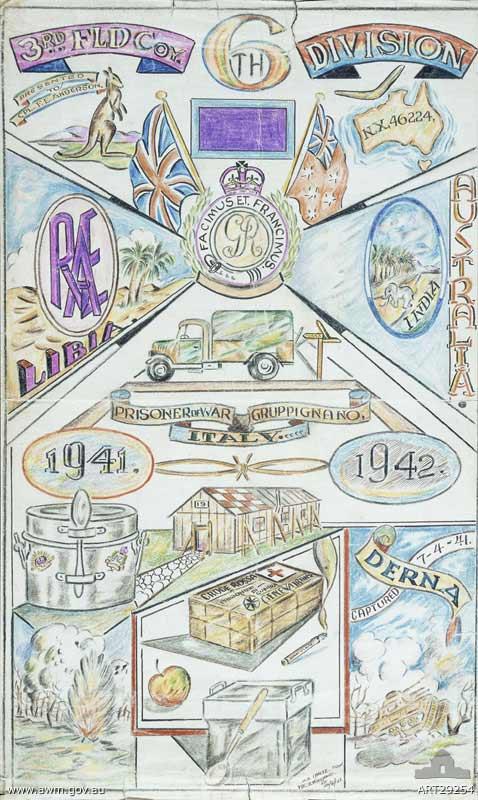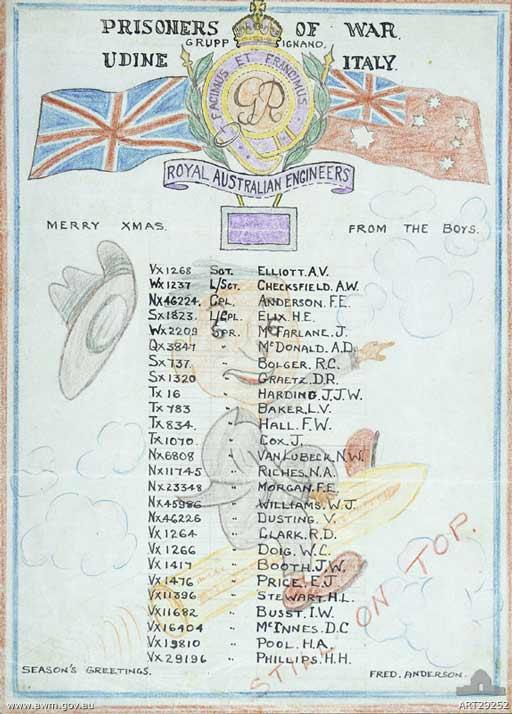Stolen Years: Australian prisoners of war - Campo 57
“A sadist and a beast”
Australians who were not officers were held in Campo 57, at Gruppignano near Udine in north-east Italy. The camp was commanded by Colonel Vittorio Calcaterra, described by one prisoner as “a sadist and a beast and an accessory to murder”.
Thanks to Calcaterra, conditions in Campo 57 were extremely harsh. Food was poor, and housing was crowded and insanitary. The prisoners had to improvise their own medical treatment, coping with the “57 twins”, pneumonia and kidney disease.
Calcaterra’s regime reduced the camp to “a mass of neurosis as no one knew when his turn would come” to be victimised. An Australian doctor recorded that ten Australians died in Campo 57. The number saved by Red Cross aid, he wrote, “is beyond computation”. Calcaterra died before he could be tried as a war criminal.
Bert Woolland’s drawing depicts significant aspects of life in Campo 57: the long journey from Australia, via India and Libya, that resulted in capture at Derna, and a captivity dominated by barbed wire, Red Cross parcels, and the seemingly endless wait for the day they would be free.

B. Woolland
Second World War enlisted Australian Imperial Force
3rd Field Company, 6th Division, prisoners of war, Italy
coloured pencils with pen and ink on paper, drawn in Gruppignano, Italy, in 1942. Acquired in 1987
ART29254
Fred Anderson’s drawing lists the names of one of the first groups of Australians to become prisoners, in April 1941. These men would wait four years for liberation. The motto “still on top” reflects the comradeship that sustained them.

Fred Anderson
Second World War enlisted Australian Imperial Force
Prisoners of war, Royal Australian Engineers, Italy
pen and ink and coloured pencils on paper
drawn in Gruppignano, Italy, in 1941
acquired in 1987
ART29252

Christmas card, 1942
Prisoners of war were always homesick, but at Christmas time their thoughts of loved ones far away were particularly poignant. At Christmas in 1942 Pope Pius XII sent this card to Australian prisoners at Campo 57. The Vatican acted as an intermediary between the Axis powers and their prisoners.
RC00939
The main gate of Campo 57. About 1,200 Australians were held in this camp.
Prisoner of war (POW) huts behind the inner fence of barbed wire at Gruppignano.

